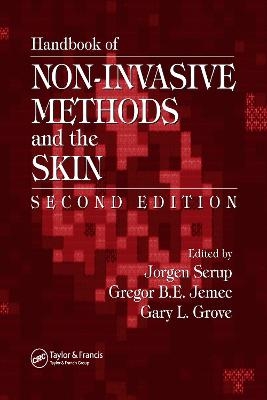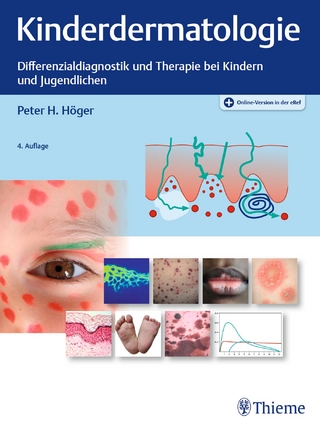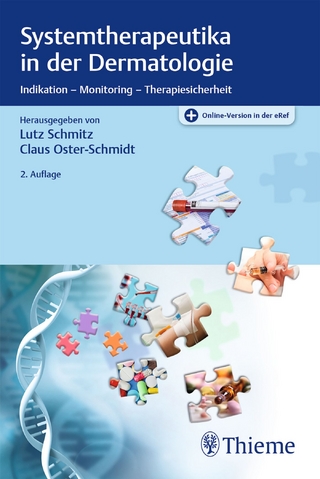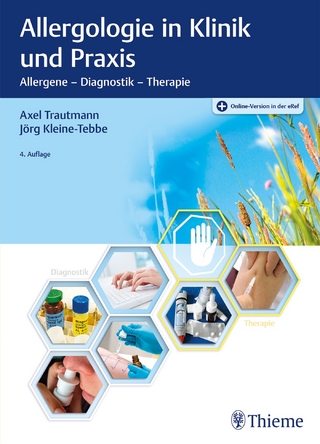
Handbook of Non-Invasive Methods and the Skin
Crc Press Inc (Verlag)
978-0-8493-1437-7 (ISBN)
Firmly established as the leading international reference in this field, Non-Invasive Methods and the Skin broke new ground with its comprehensive coverage of methods used in both clinical and experimental dermatology. Completely revised and updated, containing more than twice as much information, the Second Edition continues the tradition. The authors' thorough research and clear organization make this book a baseline reference for those using noninvasive biophysical methods to study the skin.
Arranged by physical modality and structured to provide educational and practical information, the second edition, like its predecessor, will prove to be of value to young researchers and senior scientists alike. The coverage of major evaluation and measurement methods share a consistent format, including scope, sources of error, application, and validity. This edition incorporates 69 revised chapters with more than 90 new chapters covering topics such as computer technique, imaging techniques, skin friction, barrier functions, and more.
New chapters provide coverage of:
computers, computer techniques, and image analysis
imaging techniques, including clinical photography
legal situations and guidelines behind instrumental use
skin friction
barrier functions
important new techniques such as in vitro confocal microscopy, OCT, and Raman spectroscopy
veterinary/animal research use of methods
The truly interdisciplinary, international panel of contributors includes experts from the specialties of dermatology, bioengineering, pathology, manufacturing engineering, medical physics, pharmacology, microbiology, neurology, surgery, obstetrics and gynecology, cardiovascular research, and pharmacy from academic institutions and hospitals in countries such as Denmark, Germany, the United Kingdom, the United States, Japan, Israel, Taiwan, and Singapore. The revision is extensive and covers a broad spectrum of methods while providing the same caliber of authoritative information that made the previous edition so popular. Application oriented, practical, and instructive, this Second Edition will meet the needs of the researchers today, and in years to come.
Jorgen Serup, Gregor B. E. Jemec, Gary L. Grove
1. Personal Perspectives on Bioengineering and the Skin: The Successful Past and the Brilliant Future. 2. How to Choose and Use Non-Invasive Methods. 3. A Practical Guide to Resources on the Internet for the Skin Researcher. 4. The Skin Integument: Variation Relative to Sex, Age, Race, and Body Region. 5. Seasonal Variations and Environmental Influences on the Skin. 6. Non-Invasive Methods and Assessment of Skin Diseases. 7. Standards for Good Clinical Practice. 8. Statistical Analysis of Sensitivity, Specificity, and Predictive Value of a Diagnostic Test. 9. Sample Size Calculation. 10. Implementation of a Quality Management System in a Contract Laboratory Working with Non-Invasive Methods. 11. Ethical Considerations. 12. General Aspects in Medical/Clinical Photography. 13. Use of Compact Digital Camera for Snap Photography. 14. Computerized Image Analysis of Clinical Photos. 15. Magnifying Lens - Non-Invasive Oil Immersion Examination of the Skin. 16. Dermatoscopy. 17. Fiber-Optic Microscopy System for Skin Surface Imaging. 18. Automated Assessment of Pigment Distribution and Color Areas for Melanoma Diagnosis. 19. Skin Replication for Light and Scanning Electron Microscopy. 20. Skin Surface Replica Image Analysis of Furrows and Wrinkles. 21. Stylus Method for Skin Surface Contour Measurement. 22. Laser Profilometry. 23. Three-Dimensional Evaluation of Skin Surface: Micro- and Macrorelief. 24. The Morphological Tree of the Cutaneous Network of Lines. 25.
Comparison of Methodologies for Evaluation of Skin Surface Contour and Wrinkles: Advantages and Limitations. 26. Tribological Studies on Skin: Measurement of the Coefficient of Friction. 27. Skin Friction Evaluation by Unidirectional Stress Using a Friction Tester. 28. Haptic Finger. 29. Cyanoacrylate Biopsy for Cytologic Evaluation of the Epidermis. 30. High-Resolution Sonography of the Epidermis In Vivo. 31. Optical Coherence Tomography in Dermatology. 32. In Vivo Reflectance Mode Confocal Microscopy in Clinical and Surgical Dermatology. 33. In Vivo Reflectance Mode Confocal Laser Microscopy of Melanocytic Skin Lesions. 34. In Vivo Confocal Microscopy of the Skin Surface Using Fluorescent Markers. 35. In Vivo Confocal Microscopy Application in Product Research and Development. 36. Nuclear Magnetic Resonance (NMR) Examination of the Epidermis In Vivo. 37. Spectrophotometric Intracutaneous Imaging (SIAscopy): Method and Clinical Applications. 38. Epidermal Hydration: Measurement of High-Frequency Electrical Conductance. 39. Measurement of Epidermal Capacitance. 40. Bioimpedance as a Non-Invasive Method for Measuring Changes in Skin. 41. Comparison of Commercial Electrical Measurement Instruments for Assessing the Hydration State of the Stratum Corneum. 42. Methods to Determine Desquamation Rate. 43. Application of Adhesive Techniques to Harvest Stratum Corneum Material. 44. Dry Skin and Scaling Evaluated by D-Squames and Image Analysis. 45. Measurement of Transepidermal Water Loss by Semiopen Systems. 46. Measurement of Transepidermal Water Loss by Closed-Chamber Systems. 47. Measurement of Transcutaneous Oxygen Tension. 48. Measurement of Transcutaneous PCO 2. 49. Skin Surface pH. 50. The pH Gradient in the Epidermis Evaluated by Serial Tape Stripping. 51. Techniques for Visualization of Ionic Gradation in Human Epidermis. 52. Skin Chamber Techniques. 53. Microdialysis Methodology for Sampling in the Skin. 54. Skin Surface Microflora. 55. Mapping the Fungi of the Skin. 56. High-Frequency Ultrasound Examination of Skin: Introduction and Guide. 57. Ultrasound B-Mode Imaging and In Vivo Structure Analysis. 58. Ultrasound Assessment of Dermal Water and Edema In Vivo. 59. Ultrasound Assessment of Skin Aging. 60. Ultrasound Imaging of Subcutaneous Tissue and Adjacent Structures. 61. Magnetic Resonance Spectroscopy of the Skin. 62. Magnetic Resonance Examination of Skin Disorders. 63. Raman Spectroscopy of Skin. 64. Identification of Langer's Lines. 65. Suction Chamber Method for Measuring Skin Mechanical Properties: The Dermaflex ®. 66. Suction Chamber Method for Measurement of Skin Mechanics: The Cutometer ®. 67. Suction Chamber Method for Measurement of Skin Mechanics: The New Digital Version of the Cutometer. 68. Suction Chamber Method for Measurement of Skin Mechanics: The DermaLab. 69. Twistometry Measurement of Skin Elasticity. 70. Levarometry. 71. Indentometry. 72. The Gas-Bearing Electrodynamo Meter. 73. Ballistometry. 74. Colorimetry. 75. Quasi-L*a*b* Color Measurement from Digital Images. 76. Practical Color Calibration for Dermatoscopic Images. 77. Measurement of Erythema and Melanin Indices. 78. Dynamic Capillaroscopy. 79. Capillaroscopy and Videocapillaroscopy Assessment of Skin Microcirculation: Dermatological and Cosmetic Approaches. 80. Laser Doppler Measurement of Skin Blood Flux: Variation and Validation. 81. Examination of Periodic Fluctuations in Cutaneous Blood Flow. 82. Laser Doppler Flowmetry: Principles of Technology and Clinical Applications. 83. Laser Doppler Imaging of Skin. 84. The Heat Wash-In and Heat Wash-Out Technique for Quantitative, Non-Invasive Measurement of Cutaneous Blood Flow Rate. 85. The 133 Xenon Wash-Out Technique for Quantitative Measurement of Cutaneous and Subcutaneous Blood Flow Rates. 86. Evaluation of Lymph Flow. 87. Sensors and Handheld Devices for Surface Measurement of Skin Temperature. 88. Thermal Imaging of Skin Temperature. 89. Assessment of Cutaneous Pain. 90. Classical Techniques for the Localization of Sweat Glands. 91. Micro-Sensor Mapping of Sudoral Activity and Skin Surface Hydration. 92. Methods for the Collection of Eccrine Sweat. 93. Methods for the Collection of Apocrine Sweat. 94. The Follicular Biopsy. 95. Measurement of Excreted Sebum Using Sebum-Absorbent Film and an Optical Reader: The TapeAnalyzer. 96. Quantification of Sebum Output Using Sebum-Absorbent Tapes (Sebutapes ® ). 97. Optical Measurement of Sebum Excretion Using Opalescent Film Imprint: The Sebumeter ®. 98. Gravimetric Technique for Measuring Sebum Excretion Rate (SER). 99. Fluorescence Photography of Sebaceous Follicles. 100. Methods for Assessment of Follicular Transport in Ex Vivo and In Vivo. 101. Measurement of Hair Growth. 102. Microscopy of the Hair: The T 875. 103. Photographic and Computerized Techniques for Quantification of Hair Growth. 104. Measurement of the Mechanical Strength of Hair. 105. Evaluating the Strength of Human Hair. 106. Methods for Nail Assessment: An Overview. 107. Measurement of Longitudinal Nail Growth. 108. Measurement of Nail Thickness. 109. Image Analysis of the Nail Surface. 110. General Guidelines for Assessment of Skin Diseases. 111. Sodium Lauryl Sulfate (SLS) Testing: ESCD Application and Reading Standards. 112. Instrumental and Computer-Based Methods for Measurement of Surface Area Afflicted with Disease. 113. Instrumental Evaluation of Wheal-and-Flare Reactions. 114. Instrumental Evaluation of Occluded Patch Test Reactions. 115. Light Sources, Sunlight, and Radiation Dosimetry. 116. Phototesting: Phototoxicity and Photoallergy.
| Erscheint lt. Verlag | 23.2.2006 |
|---|---|
| Zusatzinfo | 129 Tables, black and white; 300 Halftones, black and white; 9 Illustrations, color; 721 Illustrations, black and white |
| Verlagsort | Bosa Roca |
| Sprache | englisch |
| Maße | 210 x 280 mm |
| Gewicht | 2698 g |
| Themenwelt | Medizin / Pharmazie ► Medizinische Fachgebiete ► Dermatologie |
| ISBN-10 | 0-8493-1437-2 / 0849314372 |
| ISBN-13 | 978-0-8493-1437-7 / 9780849314377 |
| Zustand | Neuware |
| Haben Sie eine Frage zum Produkt? |
aus dem Bereich


